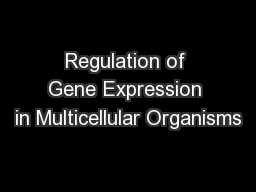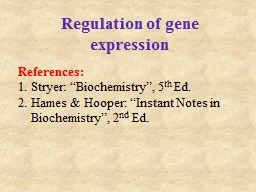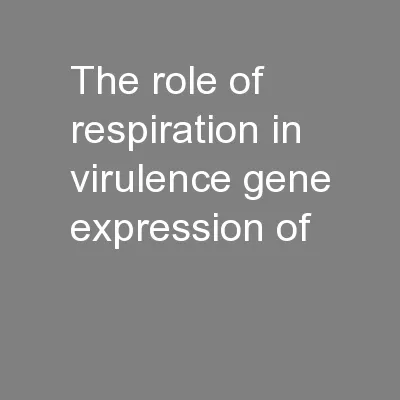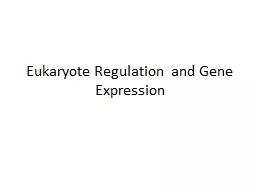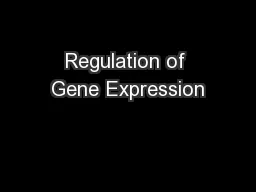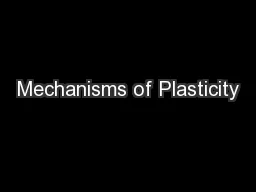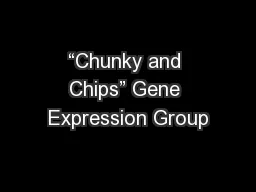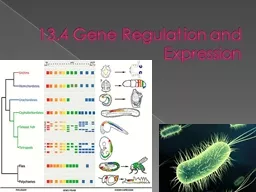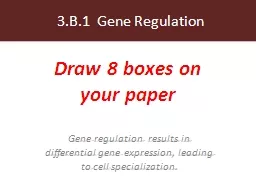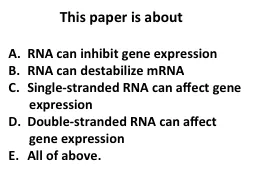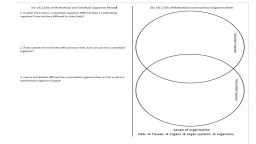PPT-Regulation of Gene Expression in Multicellular Organisms
Author : olivia-moreira | Published Date : 2017-11-01
Gene Expression Group 71411 2011 National Academies Northstar Institute for Undergraduate Education in Biology Outline Context Review Clicker Questions Cell Differences
Presentation Embed Code
Download Presentation
Download Presentation The PPT/PDF document "Regulation of Gene Expression in Multice..." is the property of its rightful owner. Permission is granted to download and print the materials on this website for personal, non-commercial use only, and to display it on your personal computer provided you do not modify the materials and that you retain all copyright notices contained in the materials. By downloading content from our website, you accept the terms of this agreement.
Regulation of Gene Expression in Multicellular Organisms: Transcript
Download Rules Of Document
"Regulation of Gene Expression in Multicellular Organisms"The content belongs to its owner. You may download and print it for personal use, without modification, and keep all copyright notices. By downloading, you agree to these terms.
Related Documents

